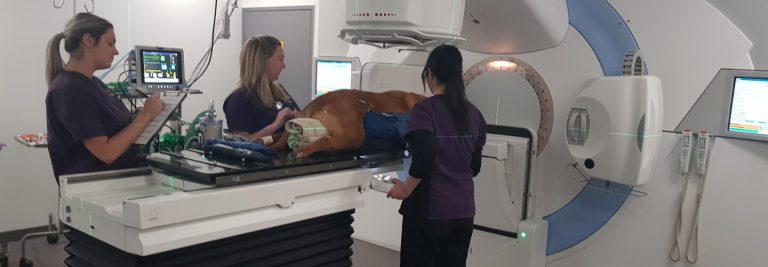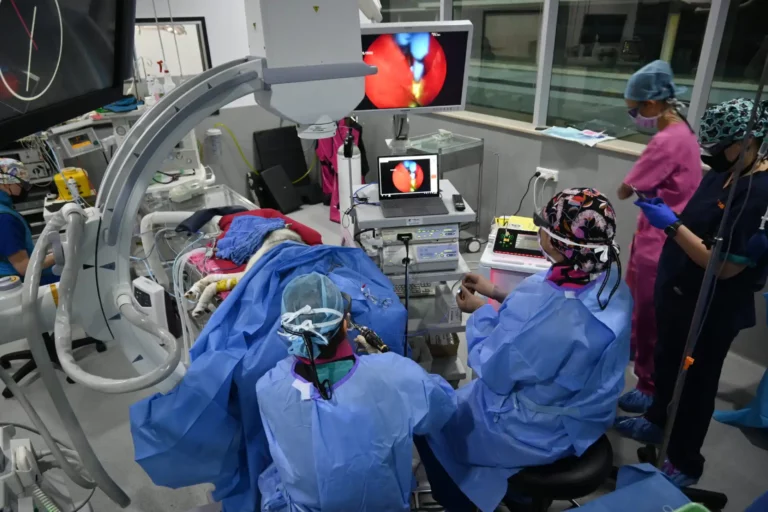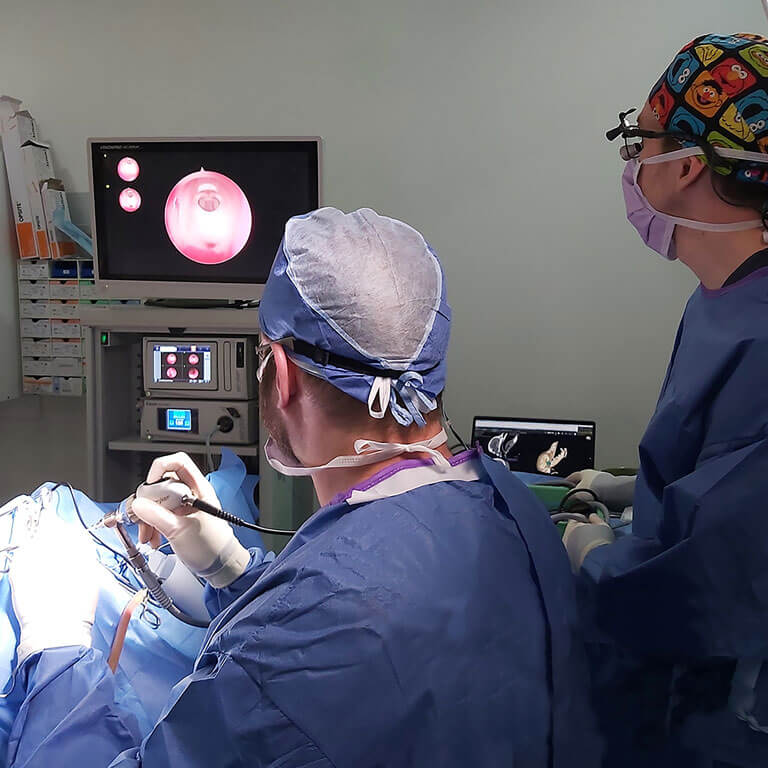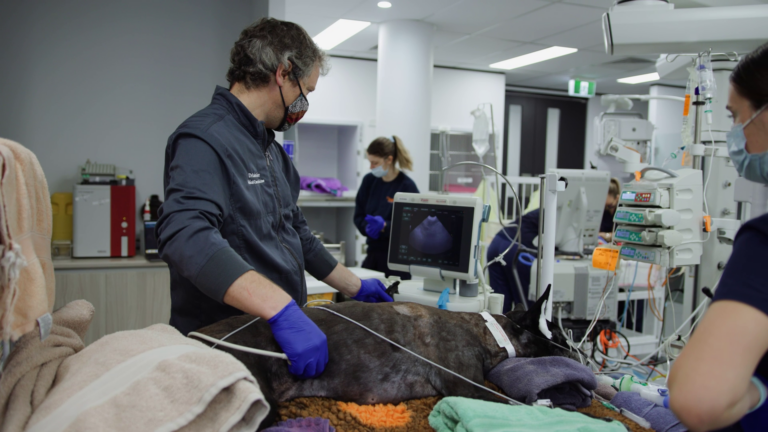By Dr Amanda Miller (Specialist in Surgery)
BOAS in dogs summary
- Brachycephalic dogs with flat-faces often have breathing difficulties due to their anatomically narrowed airways
- Surgery typically reduces airway noise and improves ability to exercise and play
- Surgery at an early age is usually beneficial
- SASH provides specialist care for your pet at all stages of their surgery and recovery
What is a brachycephalic dog?
Brachephalic literally means “short-head”. Brachycephalic dogs have skull bones that are shortened in length which give the face, snout and nose a pushed-in appearance. The most popular brachycephalic breeds include pugs, French bulldogs, English and Australian bulldogs, but also include Boxers, Mastiffs, Shih Tzus, Tibetan spaniels and Cavalier King Charles spaniels.
What is BOAS (Brachycephalic Obstructive Airway Syndrome)?
BOAS (or Brachycephalic Obstructive Airway Syndrome) stems from many decades of selective breeding to produce dogs with the popular flat-face appearance, which has unfortunately led to serious health problems.
The flat-face and shortened skull results in abnormal anatomy of the upper airways. Brachycephalic dogs typically have narrowed nostrils, overly-long soft palates and excessive tissue around the larynx (in the throat) and within the nasal cavity. The trachea (windpipe) can also be very narrow.
As a result of their anatomy and narrowed airways, dogs can have breathing difficulties that negatively impact their daily life.
Symptoms of BOAS in dogs
BOAS physically obstructs airflow and causes problems with breathing. Dogs suffering from BOAS may exhibit the following:
- Snoring
- Loud/difficult breathing
- Reduced ability to exercise
- Poor tolerance to heat
- Trouble sleeping (sleep apnoea)
- Digestive problems, such as regurgitation and vomiting
Dogs suffering from BOAS are more likely to require emergency veterinary treatment as they may be at risk of collapse and life-threatening airway obstruction.
Diagnosing BOAS in dogs
In most cases, your surgeon will gather a great deal of information about your pet by asking you for a detailed history. They may ask questions about how your dog exercises, what noises they make at rest, during exercise and when asleep, and whether they have any digestive issues. Your surgeon will then conduct a physical examination and carefully listen to your dog’s airways with their stethoscope. Often this is all that is required for your surgeon to confidently recommend surgery for your pet.
Occasionally, they may recommend pre-operative tests such as X-rays or CT scan of the head and chest, or a visual examination of the throat with your pet sedated.
Risks, and whether your dog is a suitable candidate for BOAS surgery, will be discussed with you by the consulting surgeon .
Treatment for BOAS in dogs (BOAS surgery)
Many dogs will require surgery to treat their BOAS. The aim of surgery is to remove excessive tissue to improve/correct the anatomical issues that restrict airflow. Typically, this involves widening the nostrils, shortening the soft palate and removing excessive tissue around the larynx. In some cases, laser surgery is used to remove excessive tissue from within the nasal cavity. In severe cases, a permanent tracheotomy may be required to create a new entrance for airflow at the level of the trachea (windpipe).
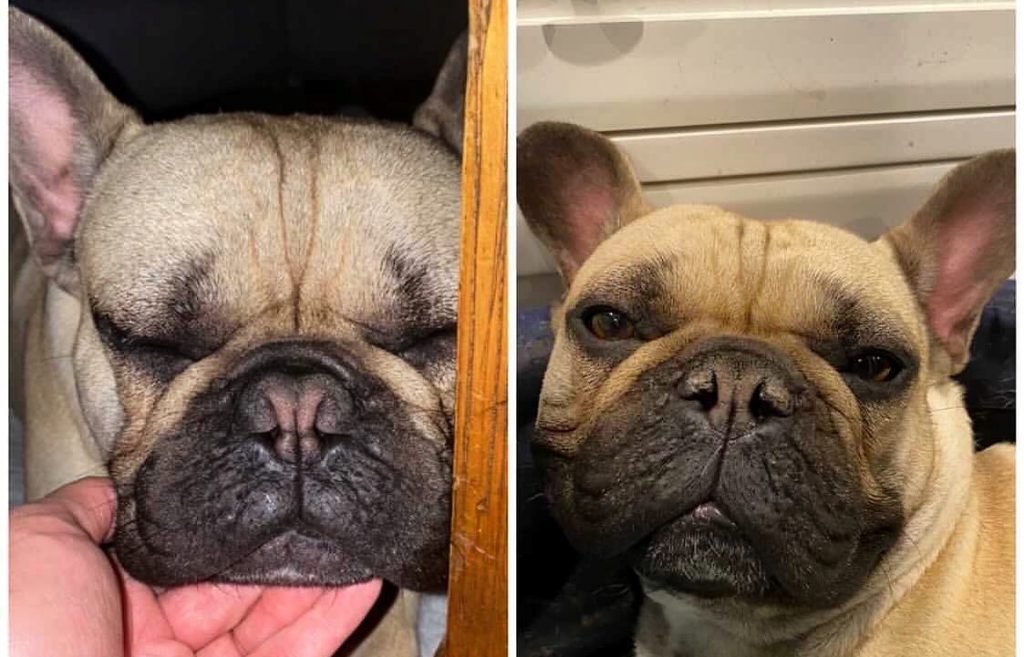
Recovery from surgery for BOAS in dogs
Dogs will remain in hospital at SASH overnight so they can be carefully monitored for any complications. Your dog will be cared for within the ICU department during their stay, under the supervision of the Critical Care Specialist team. Early surgical complications may include surgical swelling and regurgitation/vomiting, both of which can cause obstruction of the airways and breathing difficulty. These complications occur rarely (less than 10% of cases) but require urgent attention if they occur. When treated promptly by Critical Care Specialists the likelihood of complete recovery from these complications is very high.
Most dogs will go home the day after surgery, once the risk of complications is very low. Your pet will need to be kept calm and quiet for 2 weeks following surgery. They will need to be rested from regular exercise and taken outside only for toilet breaks. They should be kept in a cool environment in the case of hot weather. If they are normally very exuberant or like to bark a lot, they may be prescribed a mild sedative medication to aid their recovery.
Your dog will need to be fed soft food, such as tinned dog food, cooked meat, or dog kibble that has been moistened with water. They will not be allowed to eat bones or dog chews for several weeks.
Your dog will be asked to return for a revisit appointment with their surgeon 2 week after surgery. Most dogs can return to normal exercise and diet after this appointment.
Outcomes and risks for surgery for BOAS in dogs
The risks of complications from BOAS surgery can be significantly reduced when the surgery is overseen by a Specialist Surgeon with skill and expertise in this condition. SASH will also provide your dog the very best care from Specialists in Anaesthesia and Critical Care to maximise their chance of a trouble-free recovery.
Although surgery for dogs cannot “cure” BOAS, surgery will usually provide a significant improvement to airflow which improves your dog’s quality of life. Generally, owners will notice reduced noises associated with breathing and a more active and playful dog. They may also see improvement in any pre-existing digestive issues.
Dogs will often gain the most benefit from BOAS surgery when it is performed early in life, often between the ages of 6 months and 2 years.
Cost of surgery for BOAS in dogs
BOAS surgery performed at SASH will include the following inclusions for best possible patient outcomes:
- Patient assessment, planning and surgery overseen by a Specialist Surgeon. SASH’s surgeons are highly experienced with BOAS surgery with a proven track record of excellent patient outcomes
- Anaesthesia and pain relief (including nerve block) overseen by a Specialist Anaesthetist
- 24-hour post-operative nursing and veterinary care in the SASH ICU, with management provided by a Specialist in Emergency and Critical Care for those requiring special attention.
To obtain an accurate cost estimate, you will need a consult with a SASH veterinarian. However, contact us below and we can do our best to provide you with as much information as possible prior to your appointment.
